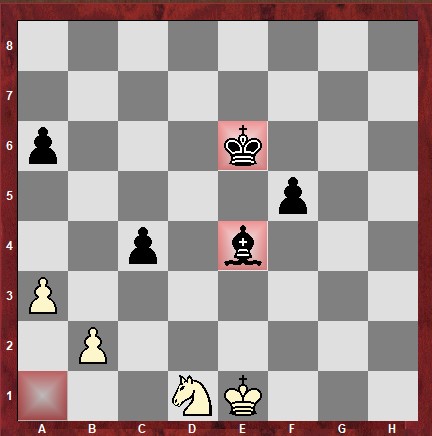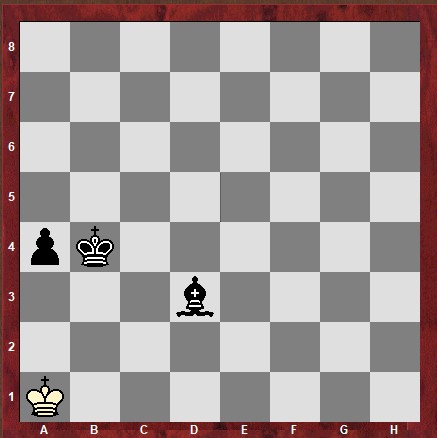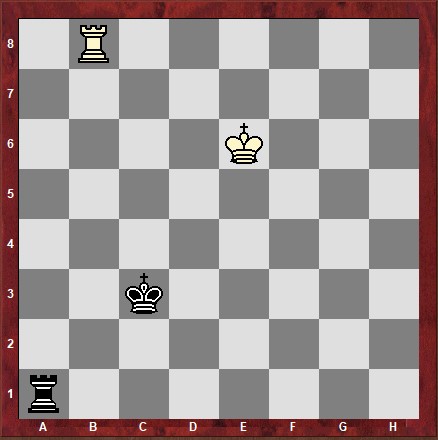2 minute Quick Play rule
Crawford Macnab
21 March 2023
Everyone should be aware of the Quickplay Finish rules that are used in Edinburgh League matches and especially the option to claim a draw when down to less than two minutes.
If you’ve been in the situation where you know that you have a clear win or draw but you are going to lose on time then you need to be aware of the option to claim a draw when down to less than 2 minutes. This might just salvage you a half point!
So at the very least it is good that you know this option exists. But there are limitations when it is applicable / valid so important that you read the details below.
Quickplay Finish
This is the phase of the game after 34 moves have been played.
Chess Edinburgh website has a Rules Page which covers this in the “Summary of Chess Edinburgh Quickplay Finish Rules” section. Of note:
- After 34 moves have been played, an additional time of 15 minutes (or 20 minutes) is added.
- You are now in the in the Quickplay finish and have the remaining time to complete the game.
- Both players need to write the moves down until they have less than 5 minutes left.
- If you have less then five minutes then you can ask a team mate (if available) to write the moves down on your scoresheet for you.
- A player may claim a draw when the player has less than two minutes left on the clock and before the player’s flag falls.
Claiming a Draw when less than 2 minutes left
In summary “this rule is an attempt to ensure that a player does not lose who, from the position on the board and his/her demonstrated standard of play, would be able to gain at least a draw had time considerations not played a critical role”.
The Rules Page mentioned above covers this in the “Summary of Chess Edinburgh Quickplay Finish Rules” section. And has more guidance in the “Notes for the Guidance of Team Captains and Players” section that follows.
I would recommend that you read through these two sections but some practical perspective on this:
Before you get down to less than 2 minutes left
- If you are well ahead in material / position and your opponent does not have practical chances for counterplay, then if you think you won’t be able to finish the game before your time runs out, consider offering a draw. Most opponents will accept this.
- Any time you offer a draw you should note this on your scoresheet next to the move. I use a “(=)”, an equal sign in brackets.
- If not sure if you have enough time, then you may of course continue until you have less than two minutes.
Less than 2 minutes left
You can make a claim on one of two grounds:
- your opponent cannot win by normal means, or
- your opponent has been making no effort to win by normal means.
Note that if you do make such a draw claim then that is the game finished and it can’t continue. If your claim is valid then it’s a draw, otherwise you lose the game.
Opponent making no effort to win by normal means
Some examples would be:
- your opponent has not been trying to win on the board, but has been trying to win on time by making passive moves.
- your offer of a draw was declined when your opponent had an inferior position and your opponent has not since then created counterplay.
Opponent cannot win by normal means
In the majority of cases, players know perfectly well which player has a winning advantage, and there is no dispute if that player claims a draw. As mentioned above it would be recommended in such a situation to offer a draw before you get to the last two minutes.
The difficult cases are those in which the material is more even, but where players claim that their opponents cannot win for positional reasons.
Reasons for awarding the draw include:
- the player’s material and/or positional advantage is clear, and that the opponent has no reasonable way to create counterplay that would give him winning chances. The more material on the board the greater the advantage must be.
- that the position is clearly drawn, e.g. the player is controlling the queening square with King against a or h pawn and wrong coloured bishop.
- that the play of the player has fully demonstrated that he knows how to draw the position which is materially even or disadvantageous e.g. K+N vs K+R with no pawns.
Real Examples
In the SNCL in 2016/17 I was playing with the white pieces and reached the position below where black is a pawn up with a likely winnng advantage.

Winning advantage for black
Although at this stage there were some drawing chances black was pushing for the win. In this position if I had less than two minutes left and claimed a draw this claim would fail. I did though see a drawing possibility due to the fact that black had a rook pawn and the wrong coloured bishop to promote this pawn.

Clearly drawn
Sure enough I managed to swap off blacks f and c pawns for my a and b pawns at the cost of my knight. This is a known drawn position where the black bishop can’t force the white king away from a1. My opponent actually did not appreciate this (otherwise he would have stopped me aiming for it!) and declined my draw offers. I then just let my clock drop down to just under two minutes, stopped the clock and called over the arbiter to claim a draw. Which was accepted!
The example below was similar to a position reached in a recent league match. For a while one player also had a pawn but was unable to protect it and ended up losing it to reach king and rook versus king and rook.

Cannot win by normal means
As the pieces are not awkwardly placed this is a clear draw whoever has the move. The player with less than two minutes should simply stop the clock and claim a draw which would be valid. Actually the player with more time thought the game should continue as his opponent might blunder. Although there is the possibility of a blunder or opponent running out of time this is a case where the two minute rule applies and it is a draw.
In the example below, black is two pawns ahead with a good advantage and every prospect of winning the game.

Black draw claim would fail
In this position if black had been down to less than two minutes and claimed a draw then this would have failed. Although two pawns ahead there is not a clear material advantage and still plenty of play in the position.
Your are losing but opponent is low on time
If you are in the situation where you are losing but your opponent has very little time left and may not be able to finish you off before running out of time, then it might be worth offering a draw. Your opponent may well accept. Or they may decide to take the chance and go for the win.